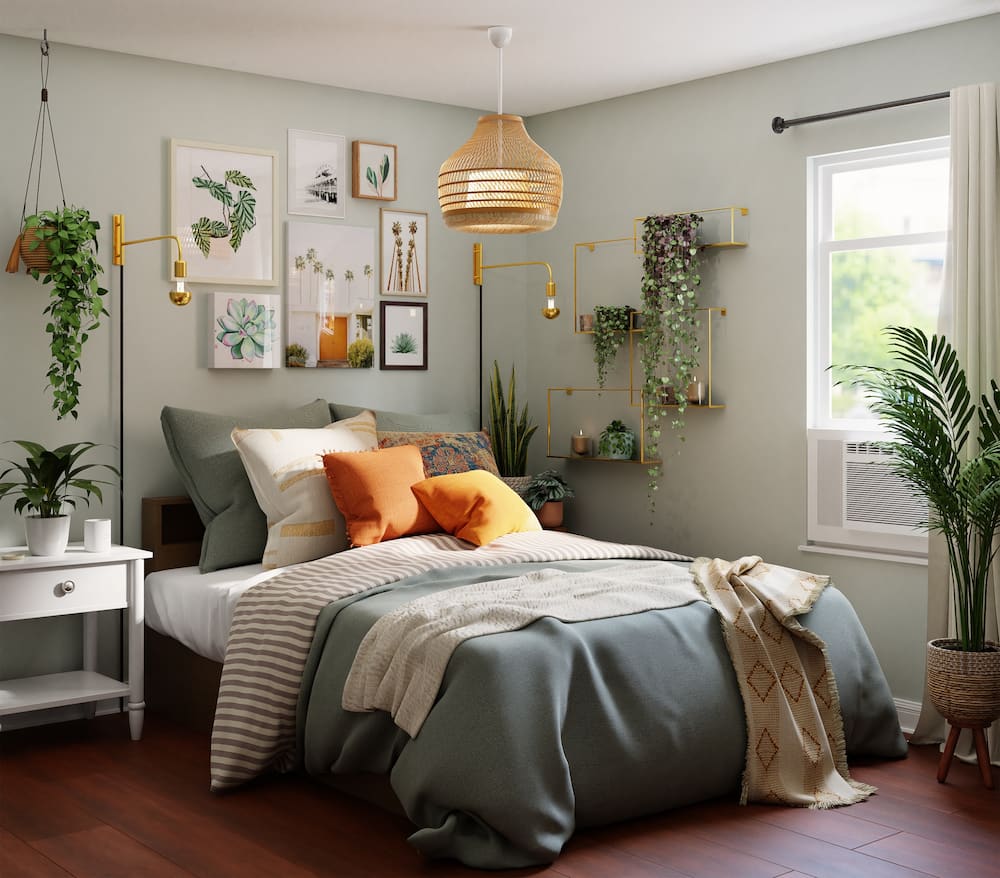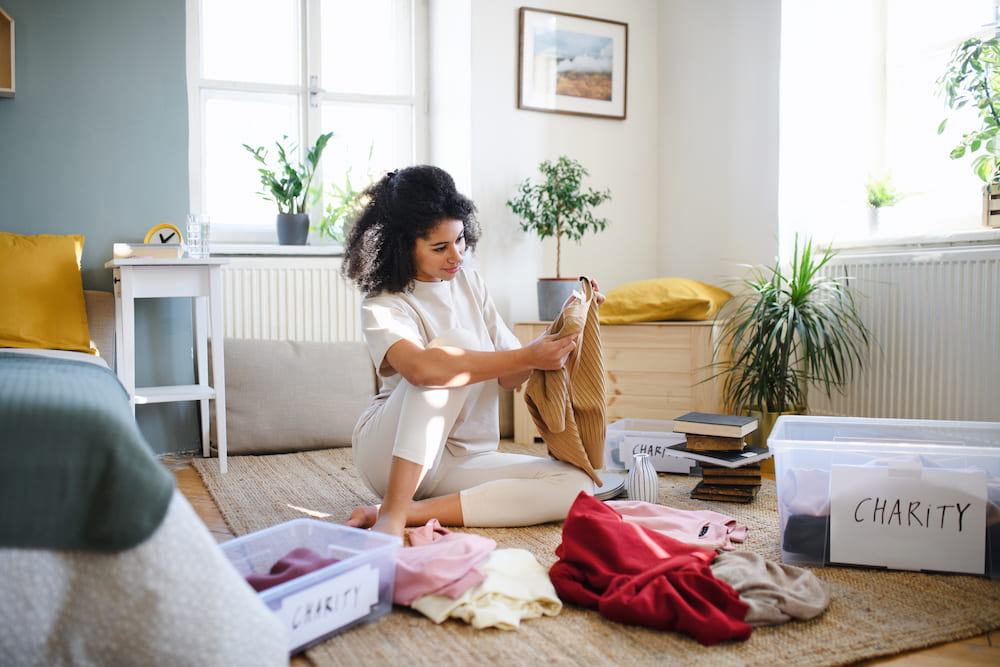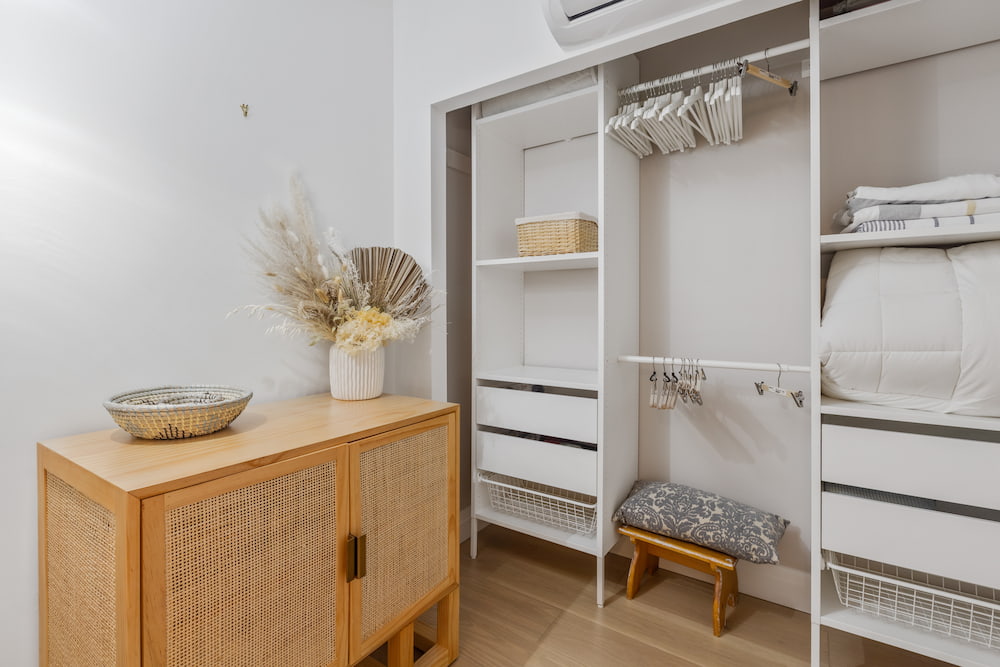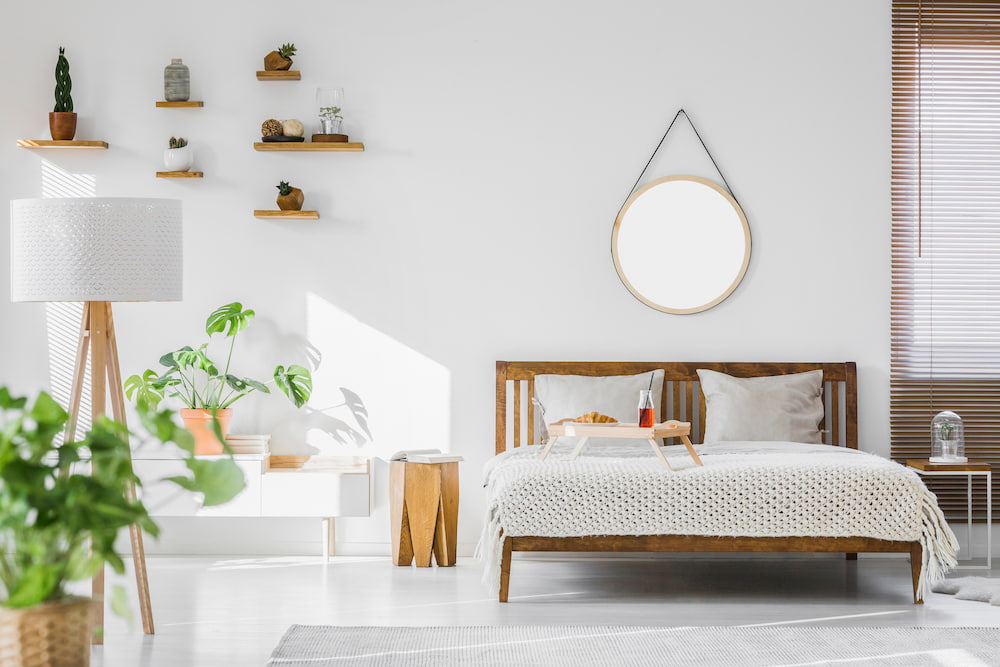How to Declutter and Organize Your Bedroom

If your bedroom has become cluttered chaos, with piles of clothes, disheveled drawers and shoes strewn about, it’s time to declutter and organize!
Did you know, a clean, uncluttered room can actually result in a better night’s sleep? According to Sleep Foundation, the bedroom environment (including temperature, light, cleanliness and even neatness) greatly impacts quality of sleep.
We’ve created this guide to help you transform your bedroom into a comfortable, relaxing place to rest. Find tips on decluttering, cleaning and organizing to refresh your bedroom and ensure it stays tidy!
Create a Plan
To ease the process of decluttering and organizing your room, you need to start with a plan. The first step is to create a decluttering schedule. Write down all the places you need to declutter, including your closet, nightstands, dresser, under the bed, etc., and then break down the list into manageable sections. You don’t have to complete everything in a day, instead consider tackling a few tasks at a time at a steady pace.
Then, consider what storage solutions and organizational methods you’d like to use. Depending on how much space you have and how many items you have, it’s a good idea to choose functional pieces that can be used for storage.

Decluttering Tips
It may not sound significant, but the decluttering process is crucial! To create a fresh, clean slate, you need to get rid of anything you don’t need, use or want. Here are some of our top decluttering tips:
Use the 3-pile system
While you’re decluttering, sort your items into three piles—a pile to keep, a pile to donate, and a pile to throw away. As you’re going through your items, only keep items you use and have room for. (If you happen upon items that you don’t want to part with, but you don’t have space for, consider self-storage.)
Go through your clothes
Is your overstuffed closet about to erupt with shirts, shorts, shoes and more? It may be time to go through your wardrobe. Going through your clothes is one of the most important steps to achieving a clean and organized room.
Sort your clothes using the three-pile system and be harsh! If you haven’t worn something in a year or it doesn’t fit, get rid of it. If any item of clothing is torn, ripped or otherwise damaged, throw it away. At this point, it’s also a good idea to sort your clothes: keep this season’s clothes in the closet, and store off-season items out of the way.
Declutter shoes
After you’ve gone through your clothes, you need to tackle your shoes. Sort your shoes into three piles, and only keep the shoes you have room for. Pairs you hardly wear or shoes that are damaged should go in either the toss or donate pile.
If you’re a sneakerhead or just have a lot of shoes, you may want to consider reading our blog about how to store shoes.
Go through Jewelry
You’re probably an expert at the decluttering process by now. Go through your jewelry and accessories just as you sorted your clothes and shoes. Men this means you, too. Sort your watches, rings, pocketknives, collar stays, etc. Give away any costume jewelry or pieces you won’t wear again, and keep your family heirlooms or valuable jewelry in a safe place. (Consider a jewelry safe deposit box.)
If your jewelry has been sitting in your drawers for a period of time, you may find some tangles or knots. Here are a few tips to help you untangle your necklaces. If any of your valuable items are damaged, consider getting them repaired by a professional jeweler.
Declutter surfaces
You’re not done decluttering yet! The next step is to declutter all of the surfaces in your room, including nightstands, the tops of dressers, shelves and more. If you don’t love an item, give it away or toss it. The bedside table is a clutter magnet. If it is crowded with old glasses, knickknacks or notes, you need to clean it off to tidy up your space.
Remove excess furniture
If you have a small room, it’s important to remove any unnecessary furniture. Extra furnishings can make your space feel crowded and chaotic. It’s important to create a comfortable space you can easily navigate. Less furniture can also open up the floor space, making a space seem larger than it is.
Make a decluttering schedule
After you’ve finished decluttering your room, it’s a good idea to continue to go through your items once a week. The more often you declutter, the less time it will take (and the less overwhelming it will be). Consider blocking out half an hour every week to declutter your room to ensure it stays organized.
Pack away out-of-season clothing for storage
While all your clothes are sorted and decluttered, now is the perfect time to pack your off-season clothing and get it all out of the way. You won’t need any of these items for an extended period of time, so pack them in plastic totes in your home, or consider keeping them in a storage unit. (Check out our blog for the best way to store clothes in a storage unit.)
Clean the Bedroom
After you’ve decluttered your room, giving your space a deep clean is essential. Start by stripping the bed and washing the sheets and pillowcases. It’s a good idea to wash your sheets and bedding every other week.
Next, dust or vacuum (on low) window treatments and light fixtures. Cleaning upholstery often will help eliminate allergens like pollen and dust. Then wipe down all surfaces, and don’t forget to empty and clean the inside of drawers with a cloth. Vacuum or sweep the floor and finally make the bed!
Organizing Tips
Now it’s time for the fun part. Show off your personality by choosing unique storage solutions, daring dressers, neat nightstands and more. You’ll need to organize your closet and dresser and employ storage hacks like shelving and under-the-bed storage.

Closet storage ideas
Organizing your bedroom closet is much easier after decluttering and cleaning. Remember to only keep this season’s clothes in your closet and store the rest. You can gain more space by either hanging an additional clothing rod, or putting a dresser or shelves under your hanging clothes. Consider buying baskets and containers for accessories and small clothing items. Don’t forget to check out how to maximize closet space for even more great tips on closet organization.
Try functional furniture
It’s important to have enough space for all your belongings to easily keep things neat and tidy. Multi-use furniture is a great way to add style while maximizing storage. Think about using a desk as an end bench, a small dresser as a nightstand, or even finding furniture with built-in storage, like a table with drawers, storage ottomans and more!
Keep dresser drawers organized with drawer dividers, and fold clothing using the filing method rather than stacks or layers. Check out this blog to learn how to fold clothes with the KonMari Method.
Take advantage of wall space
Keep surfaces (like nightstands or dressers) clear of clutter by taking advantage of vertical space. Floating shelves are a popular and minimalist option for holding art, plants or other items. You can also use picture ledges, brackets or cube shelves. Find these and more shelving options from IKEA.
Under-the-bed storage
Some bed frames come with built-in under-the-bed storage for shoes, off-season clothing and more. You can also purchase under-bed storage containers or organizers for clothes, pillows, blankets, etc. Here are some great options from IKEA.

FAQs: How to Declutter and Organize Your Bedroom
Q: How can I declutter my bedroom quickly?
A: You can follow the tips above to declutter your room quickly. Start by making a decluttering schedule and tackle one project at a time. You’ll need to go through your clothes, shoes, jewelry and nightstand/dresser, and decide what to keep, donate and throw away. Then follow our organizing tips to tidy up your space!
Q: What is the best decluttering method?
A: The best decluttering method is to take it one step at a time. Consider starting small—like decluttering for 5 minutes every day, giving away one item every day, or filling a whole bag with items to donate. Make a schedule or checklist and tackle one project at a time.
Q: What should you not throw out when decluttering?
A: As you’re decluttering your bedroom, there are some items that many people choose to keep rather than give away. Physical photos (if you can’t digitize them), family heirlooms, important documents and keepsakes often hold sentimental value.
Q: What is the 20/20 rule for decluttering?
A: The 20/20 rule refers to just-in-case items (items you’re keeping “just in case” you’ll need them someday). Essentially, if you can replace these items for less than $20 in less than 20 minutes, it’s safe to throw them away.
Wrapping up: How to Declutter and Organize Your Bedroom
Hopefully, this guide has provided you with useful tips and tricks to refresh and reorganize your bedroom. Get a better night’s sleep in a decluttered and tidy space. If you find you need more space as you’re organizing, check out Store Space. We offer premium self-storage units at affordable rates. Keep everything you’re not ready to part with, but don’t have room for, with us. Just find your nearest facility using our storage location finder.







